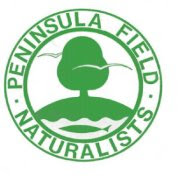May 14
Rain was forecasted once again for Saturday morning. After two weekends in a row of birding in the rain I was looking for a change of scenery and an area that did not have me walking too far from the car.
Jean and I decided to try the the southern end of the region. Our first stop, a lane in Fort Erie we birded for the first time while checking the hot spot routes for John and Kayo's book, Niagara Birds.

It was mid-May, surely we would get more migrants than we had earlier in the month. Of the 20+ species observed in the trees north and south of the lane, we added Chestnut-sided Warbler, Black-and-white Warbler, Philadelphia Vireo and Rose-breasted Grosbeak to the year list. A surprise fly-by Osprey was a last minute addition before we headed east towards the Niagara River.
Our next stop was a Fort Erie municipal park and beach to find a woodpecker species that continues to elude us along 12-Mile Creek in St. Catharines. The tick proved to be just as easy as it did last year. The pair of Red-headed Woodpeckers were quickly found as they foraged for insects in the branches above the park. At the western edge of the park there is a narrow stream (it could also be described as a ditch) that flows into Lake Erie. Occasionally, it produces some good birds and on this overcast morning, we spotted White-crowned Sparrow for the year list.
In the corner of the park, I noticed some birders we knew from the counts we have done over the past few years. We then found ourselves birding the woods east of the park with Marcie (St. Kitts CBC compiler), Peter, Tim and Rick. Birds were zipping through the branches above during our search of the forested area that was once an amusement park many years ago. The only reminder of the park are the concrete steps and footings that can be found in several locations of the wooded area.

With a little help from our fellow Niagara birders, Jean and I ticked Scarlet Tanager, American Redstart, Tennessee Warbler, Indigo Bunting and Swainson's Thrush for the year list. Tim picked out the song of a Hooded Warbler as it moved quickly through the brush and fallen trees but it proved difficult to capture in the field of view of our binoculars. This was a possible lifer for Jean and I, so in order to tick it, we needed to see it. The bird appeared to be taunting us at it circled the area where we stood. We would change position as it moved, anticipating where it might stop next. The warbler remained out of sight for Jean and I so Marcie suggested a spot known to produce Hooded Warbler.
We followed Marcie and Peter to a road west of Crystal Beach. The road is another spot of many along the Lake Erie shoreline that can be found listed in Niagara Birds.
A Black-throated Blue and Green were heard and seen as we walked along the gravel road. In addition to the 2 warbler species, we added Great-Crested Flycatcher, Red-eyed Vireo and Wood Thrush to the 2011 Ontario list.

We stood at the edge of the road listening for the song of a Hooded Warbler. Though the floor of the damp wooded area was entirely covered with Skunk Cabbage, we could still see a fair distance into the woods. Our chances of spotting a lifer had increased slightly.
As we did at the last location, we had no problem hearing the song of Wilsonia citrina. Based on its appearance, you would think a bird with a bright yellow face and underparts would be easily observed. Not this day. Playback of this species' song could not coax it into the open.
Finally, there was a glimmer of hope. Peter spotted a male Hooded Warbler and began to describe its location. Jean was able to get on it as it stood on a Skunk Cabbage before it quickly moved on. A little too quickly. The four of us had spent a little more than an hour looking for this bird and I was the only one unable to view it. Marcie and Peter's effort to find my next lifer was appreciated. The Hooded Warbler is known to breed in this area of the region so there was still a chance if a subsequent attempt was made.
 Ticking a lifer Hooded Warbler would have to wait until the following weekend. The next day, Jean and I would assist with the May Buffalo Ornithological Society Count. Of course rain was forecasted for the Sunday. A rainy weekend in Port Weller was becoming a very unlikeable trend.
Ticking a lifer Hooded Warbler would have to wait until the following weekend. The next day, Jean and I would assist with the May Buffalo Ornithological Society Count. Of course rain was forecasted for the Sunday. A rainy weekend in Port Weller was becoming a very unlikeable trend.







No comments:
Post a Comment